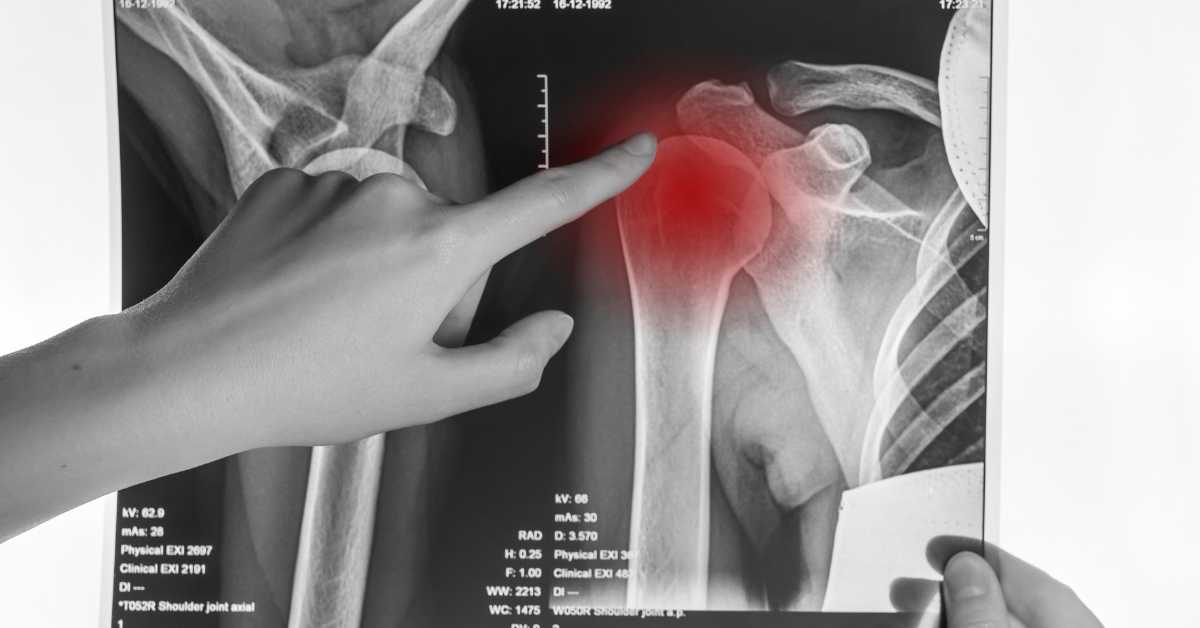Receiving Social Security Disability for Bone Fractures

If you have sustained a bone fracture and are unable to work, you may be eligible to receive disability benefits. Below, our attorneys at Dayes Law Firm discuss the complications associated with bone fractures and when the Social Security Administration (SSA) considers bones fractures as a disability. Our firm offers a free initial consultation to review your disability claim with no obligation to work with our team after the evaluation.
Bone Fractures of the Upper Extremities
Fractures can happen in any bone of the body. There are four main types of bone fractures: displaced, non-displaced, open and closed fractures.
The difference between a displaced and non-displaced fracture is based on the way the bone breaks. A displaced fracture is when the bone breaks in two or more parts and moves so that the bone ends do not line up. A non-displaced fracture is when the bone breaks halfway or all the way but does not move and keeps its proper position. In a closed fracture, the bones break but do not go through the skin like an open fracture does.
Most bone fractures are not complicated and heal rather quickly but as one gets older, the bones gradually become weaker and recovering from a fracture may become more difficult. Fractures that do not heal properly are more likely to be fractured again in the future. Depending on where the bone fracture is located and its severity, it can cause a number of impairments.
For instance, bone fractures of the upper extremities (i.e. shoulder, arm, wrist and hand), can cause incredible pain and suffering, making it hard to perform any kind of work. A number of physical functions required in most jobs can be affected, such as the ability to push, pull, lift or grasp items.
If one of your limbs is fractured, you can lose functional use of that arm or hand. This is worsened if both limbs have a fracture. Even if some use is regained, it may still cause severe pain in the affected area.
Disabling Conditions From Bone Fractures
Although most fractures heal without permanent injury, there are numerous complications that can happen with bone fractures. These complications could potentially lead to a disabling condition.
Immediate complications from a bone fracture could include:
- Injuries to muscles, joints, major blood vessels and organs
- Hypovolemic shock, a life-threatening condition caused by blood loss when a major blood vessel bursts or a major organ stops functioning
Complications a few days after a bone fracture could include:
- Bone infection
- Formation of blood clots
- Adult respiratory distress syndrome
- Compartment syndrome, a painful condition caused by pressure buildup in the muscles from tissue swelling or internal bleeding
Long-term complications after a bone fracture could include:
- Improper healing, which could result in a deformity
- Bone shortening
- Bone death caused by lack of oxygen
- Muscle wasting (atrophy), stiffness and pain
- Contractures, a permanent tightening of tissues, making it hard to move nearby joints
Social Security Disability for Bone Fractures
The SSA has two listings under Section 1.00 – Musculoskeletal System of the Blue Book that deal with bone fractures. Having a fracture is not enough to be considered disabled without any other extreme limitations.
If you have a fracture of the femur, pelvis, tibia or one or more of the tarsal bones, listing 1.06 may qualify for disability benefits if your condition is so severe that you cannot walk without using a cane, walker or crutches. It must also limit your ability to independently perform and finish activities.
If you have a fracture of an upper extremity, listing 1.07 may quality you for disability benefits as long as the following requirements are met:
- There is no solid union of the bones as evidenced by imaging tests
- A year has passed and your fracture has not healed. Your doctors are still trying to restore the use of your upper extremity through surgery or other treatment options
What if I Do Not Meet or Equal a Listing?
You may still qualify for disability benefits if you can show the SSA that your bone fracture prevents you from being able to work.
The SSA will evaluate all of your medical records and perform a residual functional capacity or RFC assessment to review your ability to complete tasks needed for most jobs, such as bending, pulling, pushing and lifting objects as well as walking and sitting for an extended time period.
If you cannot perform any jobs based on your RFC rating, the SSA may consider you disabled under a medical vocational allowance.
Reach Out to Our Firm for Help Today
If you need help obtaining disability benefits, do not hesitate to contact one of our experienced Social Security Disability lawyers in Phoenix. We are ready to help guide you through the claims process and deal with the SSA on your behalf. We also know what it takes to appeal denied disability claims.
An initial consultation is completely free and confidential. You are not obligated to move forward, and there are no upfront fees for our services. Our firm is available anytime, day or night, to talk with you.
Give us a call at 1-800-503-2000 to get started.
